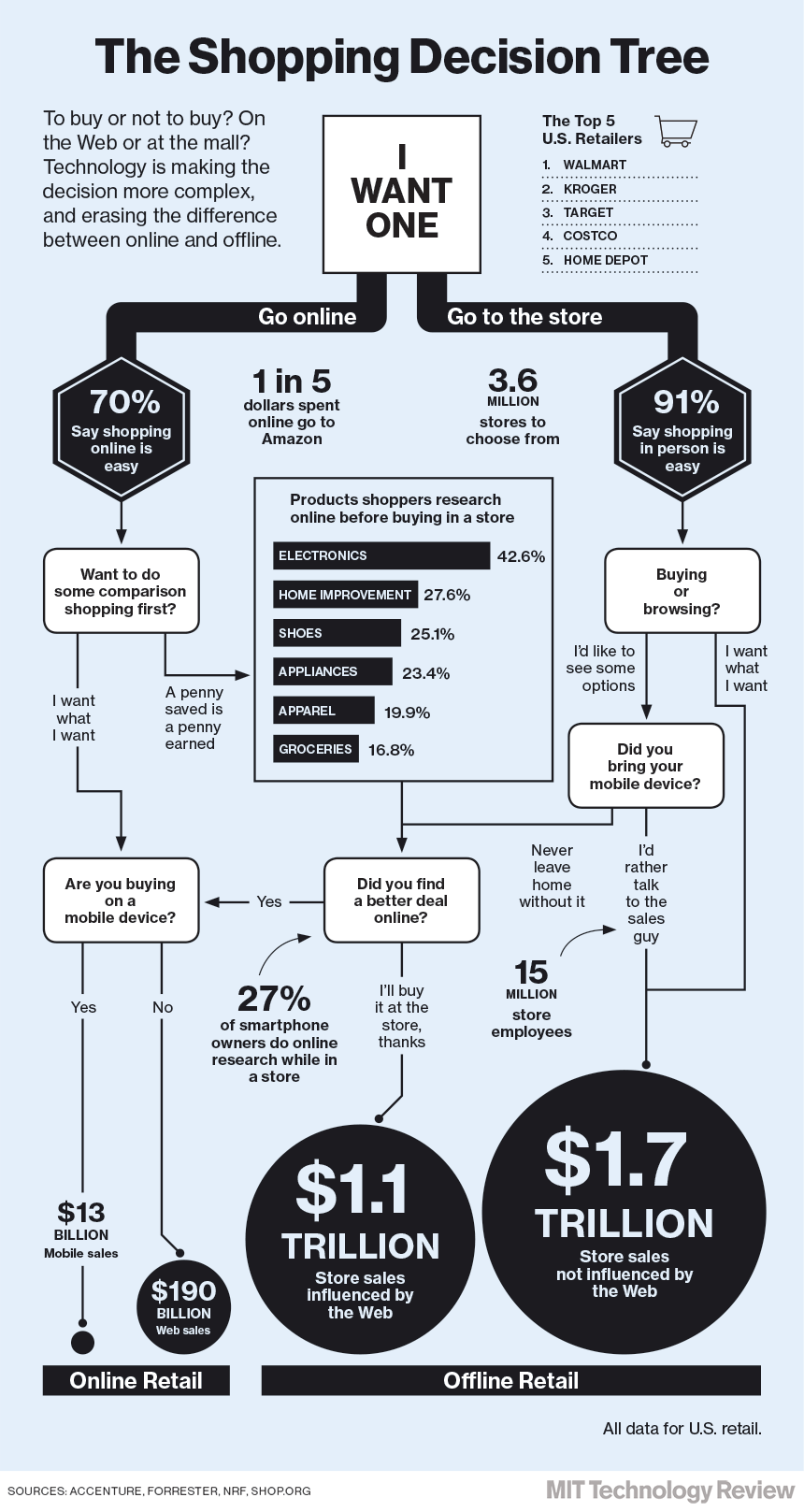- Stores were open Thanksgiving, more and longer than last year.
- Discounts & promos everywhere.
- Omnichannel should increase sales, right?
- Weren't amazingly low gas prices supposed to turbo-charge customer demand?
- Mobile ... aren't customers shifting to mobile? If so, wouldn't that result in a sales increase? I guess mobile is cannibalizing e-commerce & retail. Hmmmm. Something to think about.
The National Retail Federation cheered the results, calling the times "exciting" (click here). They're right ... it is exciting when sales drop by more than 10% ... unless you are a VP at a business experiencing the sales declines. It's not exciting when your job is at risk.
There will be breathless cheers for "record" Cyber Monday performance today ... but add a "record" Cyber Monday to Thursday-Sunday, and you'll still see a sales drop.
We made three mistakes, mistakes that we all must try to fix in 2015.
- We spent a decade telling customers to sit at home and click. It worked!! It's hard to sell merchandise in a store when you repeatedly, five times a week, for a decade plus, send emails telling the customer to click. Tell the customer 2,500 times over ten years to stay at home (imagine that message multiplied by a dozen retail businesses over a decade saying the same thing ... 30,000 messages), and the customer might start to listen. And now, we've trained the customer to avoid Black Friday by shopping on Thanksgiving or Cyber Monday ... so now we generate less sales over five days than we used to generate focusing on one day.
- Retail is boring as heck. By investing in the online experience, we ignored the in-store experience ... and there is no reason to shop in a store if it isn't fun ... online (Amazon) is eating up anything that is "boring". It's time we fessed up to this fact and did something about it.
- We ignored merchandise. We assumed the merchandise was fine and that pricing was wrong. We should have realized that the merchandise was not fine, and that's why discounting had to happen. We must invest in merchandise and experience in 2015.
We're more than capable, folks - we can easily fix this problem over the next two years. We're talented. We just need to shift our priorities away from activities that make our business partners profit, and instead focus on the merchandise that generates profit for us. If we do that, our business partners win, and we win.
We can do this!













